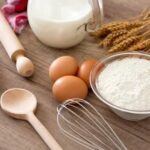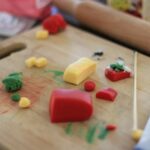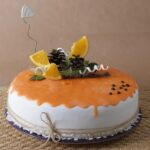What is the best icing for cake decorating? Choosing the right icing is crucial when it comes to creating a visually stunning and delicious cake. The type of icing used can greatly impact the final look, texture, and taste of the cake, making it an essential element in the art of cake decorating.
In this article, we will explore the different types of icing commonly used for cake decorating, compare their pros and cons, provide recommendations for different cake styles, offer expert tips for using icing, suggest flavor combinations, showcase decorative techniques, and discuss options for those with dietary restrictions. Whether you’re a beginner or an experienced baker, choosing the right icing is key to achieving professional-looking and delectable results.
When it comes to cake decorating, there are various types of icing to consider, each with its own unique characteristics and benefits. From classic buttercream and smooth fondant to delicate royal icing and rich ganache, the choice of icing can make a significant difference in both the appearance and flavor of the finished product. Understanding the advantages and disadvantages of each type of icing is essential in order to select the best option for your specific cake decorating needs.
In addition to exploring the types of icing available, we will also delve into practical recommendations for using them effectively on different styles of cakes. Whether you are working on a wedding cake, birthday cake, layered cake, or cupcakes, knowing which type of icing works best for each style can help you achieve professional results.
With expert tips and techniques provided in this article, you’ll be equipped with the knowledge to create beautifully decorated cakes that are sure to impress your family and friends.
Types of Icing
When it comes to cake decorating, choosing the right type of icing is crucial in achieving the desired look and taste for your creation. There are several different types of icing commonly used for cake decorating, each with its own unique texture, flavor, and versatility. Knowing the different options available and their respective pros and cons can help you make an informed decision when choosing the best icing for your cake.
Buttercream
One of the most popular choices for cake decorating, buttercream icing is known for its creamy texture and delicious flavor. It is versatile and easy to work with, making it suitable for various decorative techniques such as piping borders or creating intricate designs. However, buttercream may not hold up well in hot or humid conditions, and its soft texture may not be ideal for creating sharp edges on cakes.
Royal Icing
Royal icing is a smooth, hard-drying icing that is perfect for creating intricate details on cakes and cookies. It sets firm, making it ideal for delicate decorations such as piping flowers or intricate lace designs. However, royal icing can be quite sweet and does not have the creamy richness of buttercream.
Fondant
Fondant is a smooth, pliable icing that can be rolled out to cover cakes or formed into decorative shapes. It provides a flawless finish and can be dyed in various colors to create stunning visual effects. While fondant offers a clean look and allows for intricate designs, some people find its taste too sweet or dislike its chewy texture.
Ganache
Ganache is a rich chocolate mixture made from cream and chocolate that can be used as both a frosting and a filling. It has a glossy finish and luxurious flavor, making it an excellent choice for decadent cakes and desserts. However, ganache may require more skill to work with compared to other types of icing due to its viscosity.
These are just a few examples of the many types of icing available for cake decorating. Each has its own unique characteristics, so consider factors such as the desired design aesthetic, climate conditions, and taste preferences when choosing the best icing for your cake project.
Pros and Cons
When it comes to cake decorating, choosing the right icing is essential for achieving both a visually stunning and delicious final product. There are several types of icing commonly used for cake decorating, each with its own set of pros and cons. It’s important to consider factors such as texture, flavor, and ease of use when deciding which type of icing to use for a particular cake.
Buttercream icing is one of the most popular choices for cake decorating due to its creamy texture and ability to hold decorative shapes well. It is easily flavored with different extracts or add-ins and can be tinted with food coloring to achieve vibrant colors. However, buttercream has a tendency to melt in warm temperatures, which can make it challenging for outdoor events or in warm climates.
On the other hand, royal icing is known for its smooth and hard finish, making it ideal for intricate designs and decorations that need to hold their shape. Its consistency makes it perfect for creating delicate lacework or piping intricate details onto cakes. However, royal icing tends to have a very sweet taste that may not appeal to everyone.
Fondant is another popular choice for cake decorating due to its smooth and flawless finish. It can be rolled out thinly and draped over cakes to create a seamless look, making it ideal for wedding cakes or elaborate fondant designs. Nonetheless, some people find fondant’s taste too sweet or dislike its chewy texture.
Overall, the best icing for cake decorating depends on the specific needs of the cake being decorated and personal preference. Understanding the pros and cons of each type of icing will help decorators make informed decisions when choosing which type of icing will work best for their desired cake design.
Best Icing for Different Cake Styles
When it comes to cake decorating, choosing the right icing is crucial to achieving the desired look and taste for different cake styles. Each type of cake calls for a specific kind of icing to complement its flavor and design.
For wedding cakes, a popular choice is fondant due to its smooth finish and ability to hold intricate designs. Buttercream, on the other hand, is a versatile option that works well for birthday cakes, offering a creamy texture and the ability to hold up well in warmer temperatures.
Layered cakes often benefit from the use of ganache icing, which provides a rich and glossy finish that adds an elegant touch to the overall presentation. As for cupcakes, cream cheese icing has become a favorite due to its tangy flavor and creamy consistency that pairs perfectly with various cupcake flavors. Understanding which type of icing works best for each cake style can make all the difference in creating visually stunning and delicious desserts.
In addition to pairing specific types of icing with different cake styles, it’s important to consider factors such as design flexibility, ease of application, and compatibility with various flavors. For instance, royal icing is ideal for intricate detailing on wedding cakes but may not be as suitable for layered cakes due to its hard texture.
By taking into account both the aesthetic and practical aspects of decorating cakes with different types of icing, bakers can achieve professional-looking results that delight both the eyes and taste buds.
Tips for Using Icing
When it comes to cake decorating, choosing the right icing is crucial for achieving a professional and polished finish. Here are some expert tips and techniques for working with different types of icing to create stunning cakes:
- Piping: Piping is a popular technique for adding decorative designs to cakes. When using buttercream or royal icing, make sure the icing has a thick, but smooth consistency for easy piping. Use different piping tips to create various designs such as rosettes, borders, or intricate patterns.
- Smoothing: Achieving a smooth and flawless finish on your cake requires patience and practice. For buttercream, use a bench scraper or offset spatula to smooth the icing evenly around the cake. With fondant, roll it out thinly and carefully drape it over the cake, then use a fondant smoother to eliminate any air bubbles or wrinkles.
- Creating Decorative Designs: Depending on the type of icing you choose, there are different ways to create decorative designs. Royal icing can be used for intricate lace work or delicate details, while ganache is great for creating a glossy finish or chocolate drizzles.
It’s also important to consider the temperature and humidity of your environment when working with icing. In warmer climates, it may be helpful to chill your cake before applying certain types of icing to prevent melting or drooping. Additionally, practicing on parchment paper can help improve your skills before decorating the actual cake.
Each type of icing has its unique properties, so experimenting with different techniques will help you find what works best for your specific project.
Remember that practice makes perfect when it comes to cake decorating, so don’t be afraid to try new techniques and have fun with your creations.
Flavor Combinations
Flavor is a crucial aspect of cake decorating, and choosing the right icing flavor to complement the cake itself can greatly enhance the overall taste experience. When considering what is the best icing for cake decorating in terms of flavor combinations, it’s essential to take into account the type of cake being used and how different flavors interact with each other.
Chocolate Cake
For chocolate cakes, rich and decadent flavors work well. A classic choice for pairing with chocolate cake is chocolate buttercream icing, which adds an extra layer of indulgence. Another option is to use a light and fluffy vanilla buttercream to create a contrast in flavors.
Vanilla Cake
With vanilla cakes, there are endless possibilities for flavor combinations. One popular choice is to use a creamy and tangy cream cheese icing for a delightful balance of sweetness and subtle tartness. Alternatively, a fruit-flavored icing such as raspberry or strawberry can add a refreshing twist to the classic vanilla cake.
Red Velvet Cake
The velvety texture and subtle cocoa flavor of red velvet cakes pair beautifully with cream cheese icing, creating a harmonious blend of sweet and tangy notes. For those who prefer a richer option, indulgent ganache can also be used for an extra depth of flavor.
Lemon Cake
Bright and zesty lemon cakes call for an equally vibrant icing. Lemon-flavored buttercream or cream cheese icing can enhance the citrusy notes of the cake while providing a smooth and creamy texture. Another option is to use a light and airy meringue-based frosting for a delicate touch.
Pairing different types of icing with various cake flavors offers endless opportunities to create unique and delicious combinations that will delight both the eyes and taste buds. Ultimately, the best icing for cake decorating will depend on personal preferences and what complements the specific cake being made. Experimenting with different flavor combinations can lead to delightful surprises that elevate the entire cake decorating experience.
Decorative Techniques
When it comes to cake decorating, the type of icing used plays a significant role in achieving beautiful and professional-looking results. Different types of icing offer various decorative techniques that can be utilized to create stunning designs on cakes and cupcakes.
Piping flowers is a classic and elegant way to decorate cakes, using buttercream or royal icing to create delicate and realistic floral patterns. Another popular technique is creating textured effects, which can be achieved with fondant or ganache to add visual interest and depth to the cake’s appearance.
Using stencils or molds is another fantastic way to decorate cakes with different types of icing. Stencils can be used with royal icing or powdered sugar for intricate designs, while molds can be filled with fondant or modeling chocolate to create 3D shapes and figures. These techniques allow for endless creativity and customization when it comes to cake decorating, making it possible to bring any design idea to life.
In addition to these decorative techniques, it’s essential to consider the best type of icing for the specific design you have in mind. For example, buttercream is excellent for piping intricate details due to its smooth consistency, while fondant is ideal for creating sculpted decorations and covering larger surfaces seamlessly. Understanding the unique properties of each type of icing will help you choose the best option for your desired decorative technique and achieve stunning results every time.
| Decorative Technique | Icing Type |
|---|---|
| Piping Flowers | Buttercream or Royal Icing |
| Creating Textured Effects | Fondant or Ganache |
| Using Stencils or Molds | Royal Icing, Powdered Sugar (Stencils) Fondant, Modeling Chocolate (Molds) |
Best Icing for Dietary Restrictions
When it comes to cake decorating, it’s important to consider the dietary restrictions of your guests or clients. For those with dietary restrictions such as vegan, gluten-free, or dairy-free, there are still plenty of delicious icing options to choose from.
For vegan-friendly icing, a popular choice is a vegan buttercream made with dairy-free margarine and plant-based milk. This type of icing can be flavored and colored just like traditional buttercream and is perfect for decorating all types of cakes. Another option is a coconut milk whipped cream icing, which is light and fluffy, making it ideal for layer cakes and cupcakes.
When it comes to gluten-free options, you can still enjoy classic buttercream or cream cheese icing by using gluten-free powdered sugar. You can also make a delicious chocolate ganache using high-quality chocolate and heavy cream that is naturally gluten-free. Both of these options are versatile and can be used for a variety of cake styles.
For those with dairy restrictions, there are alternatives such as coconut milk ganache or a cashew cream cheese frosting. These options provide the same richness and flavor as traditional dairy-based icings while being suitable for those with lactose intolerance or dairy allergies.
Conclusion
In conclusion, selecting the right icing for cake decorating is crucial in achieving the desired look and taste of a cake. As discussed in this article, there are various types of icing to choose from, each with its own set of pros and cons. From buttercream to fondant, ganache to cream cheese icing, the options can seem overwhelming, but understanding their characteristics and knowing which works best for different cake styles is essential.
When considering what is the best icing for cake decorating, it’s important to take into account not only flavor and texture but also ease of use for creating decorative designs. Expert tips and techniques can be incredibly helpful in mastering the art of working with different types of icing and achieving a professional finish. Furthermore, considering flavor combinations that complement various cake flavors can elevate the overall taste experience.
For those with dietary restrictions, there are alternative recipes and options available to ensure that everyone can enjoy beautifully decorated cakes. Ultimately, the key takeaway is that choosing the best icing for cake decorating plays a significant role in creating stunning and delicious results. It’s worth taking the time to explore and experiment with different types of icing in order to find the perfect fit for each unique cake creation.
Frequently Asked Questions
What Type of Icing Is Best for Cake Decorating?
The best type of icing for cake decorating is buttercream icing. It is easy to work with and holds its shape well, making it perfect for piping borders, flowers, and other decorations on cakes.
What Kind of Icing Do Professionals Use?
Most professionals use Swiss meringue buttercream or Italian meringue buttercream for cake decorating. These types of icing are smoother, less sweet, and have a more stable texture, allowing for intricate designs and a professional finish.
What Is the Best Icing to Practice Cake Decorating?
For practicing cake decorating, it’s best to use a simple buttercream icing. This type of icing is forgiving and easy to manipulate, which makes it ideal for beginners who are learning piping techniques, working with different tips, and experimenting with designs on cakes before moving on to more advanced icings.

Welcome to my blog about home and family. This blog is a place where I will share my thoughts, ideas, and experiences related to these important topics. I am a stay-at-home mom with two young children. I hope you enjoy reading it! and may find some helpful tips and ideas that will make your home and family life even better!





